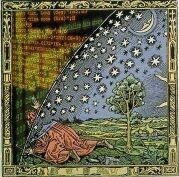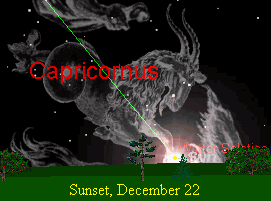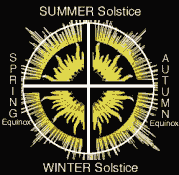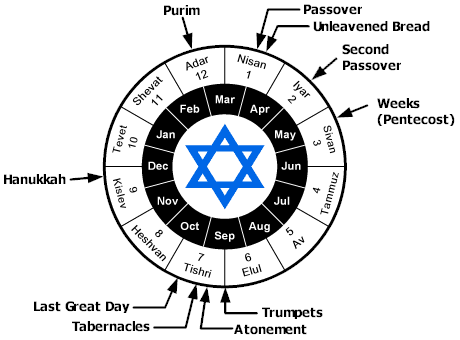Traveling In Space With Jesus Christ: 7
It's not surprising, in our present culture of digital watches and wall calendars, that we've lost the original astronomical meaning of these Bible stories.
Today most people never look at the stars or pay any attention to the position of the sun in the sky.
The following is the result of intensive investigation into the Bible, its contents, origin, history, and everything that modern day biblical scholars know.
"Traveling In Space With Jesus Christ " Is a series of lessons that will show you the similarities between the story of Jesus Christ's journey, while being compared to the journey that our very own Sun takes through the constellations.
This is a continuation from the first lessons series of 39.
In order for you to understand the entire concept, it is of extreme importance that you read all of this in order starting with lesson one.
Please DO NOT skip ahead. Doing so will just cause you confusion and eventually will end with you in cognitive dissonance.
Next Lesson (under construction)

Introduction
In ancient times people were very familiar with the Sun and the stars. At night they had nothing better to do than gaze up at the stars. They saw how the stars move across the sky during the night, and how different constellations are visible at different times of the year.
They made up stories which were allegories based on what they saw. Later on, these stories took on a life of their own, as the stories were passed down from generation to generation but the knowledge of what the stories represented was lost. People started believing the stories were real and actual history of events that actually really happened in the past, when originally the stories were nothing more than allegories for what people saw happening in the stars.

The ancients looked to the sky to determine what time of year it was. It was important to know what time of year it was. You needed to know when it was time to plant crops and when it was time to harvest the crops. As the year passed the Sun appears to make a journey through the constellations of the Zodiac. The entire story of Jesus’ ministry is an allegory for this journey.
Lesson 15: The Sun Travels Along the Ecliptic
In our previous lesson we showed how sunset is the time of day when we can determine the position of the sun relative to the stars (see previous lesson; link is at the beginning of this post). Now let us observe how the position of the sun relative to the stars changes as the days go by.

The animation above shows how the sun's position changes day by day. (For this animation I have moved the sun slightly above the horizon but kept the sky dark so we can still see the stars.) Note how each day at sunset the constellation Capricorn (the goat) gets lower and lower until it is completely below the horizon. The sun appears to travel upwards along the green line through Capricorn towards Aquarius (the water bearer). The green line, representing the path the sun travels along, is known as the ecliptic.
If I allowed the animation to continue past January 10 we would see the sun continue it's journey upwards along the green line through the constellation Aquarius. (The corresponding animation file would be too big for some to download, so I stopped at January 10. However, you may download and install a trial version of the program Starry Night Backyard which generated these images from www.starrynight.com. The instructions tell you how to set the program so it will follow the sun's annual journey through the stars.
If I allowed the animation to continue for the rest of the year we would observe the sun travel through all 12 constellations of the zodiac. These 12 constellations are: Capricorn, Aquarius, Pisces, Aries, Taurus, Gemeni, Cancer, Leo, Virgo, Libra, Scorpio, and Sagittarius. At the end of the year the sun completes its journey by arriving back at Capricorn where it started, ready to begin anew its annual journey through the 12 constellations.
Note that the ecliptic is a closed circuit around the celestial sphere. (We shall encounter the word "circuit" again later on.)
By observing which constellation the sun is in you can tell what time of year it is. This is important if you are a farmer. You need to know when to plant the crops and when to reap the harvest. You need to be familiar with the seasons of the year. This is why astronomy was always important in ancient civilizations.
"Above" the earth we have the visible night sky; below the earth we have the abyss of whatever is under the world that we can not see. Recall again that the sun rises in the East, and sets in the West. In this animation the sun is over there on the West side setting in the West. Note how each day at sunset Capricorn the goat gets lower and lower until it is completely below the horizon. The sun appears to travel through Capricorn as the days go by. On December 22 (the Winter Solstice) the sun is just starting to go through Capricorn. By January 10 the sun has made its way through most of Capricorn and we see that the zodiac constellation of Aquarius the water bearer is next in line.
(The other members of the zodiac would form a circle around the earth. I'm not showing them all right now to keep things simple.)
(All dates are for “Biblical Times”, about 2000 years ago. In our present 21'st century you have to wait until January 18 to see what they saw on December 22 due to the earth’s precession. See Lesson on Earth's Precession).
Lesson 16 was suppose to explain with simple animations the complete cycle of the sun along the constellations.
We will skip this for now.
Its not that a big deal.
Lesson 17: Where to start the year

Since the year is circular, in that the four seasons of the year just cycle endlessly, it's somewhat arbitrary where we declare the start of the year to be. There are, however, a few natural places to start the year.
One natural place to start the year is at the Winter Solstice (December 22). This is the day the Sun is lowest in the sky, making this the shortest day of the year. From this point on the Sun gets higher and higher in the sky each day, making each day longer and longer.
Another often used place to start the year is at the Vernal Equinox (also called the Spring Equinox; March 21). On this day the Sun rises directly in the East, and day and night are of equal length. It's around here the harvest cycle begins. Time to plant some crops. The Astrology section of the newspaper always begins with Aries, Mar. 21, which is the Spring Equinox.

The Jewish calendar begins with the month of Nisan, around mid-March to early April, a date hovering around the Vernal Equinox. The twelve months of the Jewish calendar are: 1)Nisan; 2)Iyyar; 3)Sivan; 4)Tammuz; 5)Ab; 6)Elul; 7)Tishri; 8)Cheshvan; 9)Kislev; 10)Tebeth; 11)Shebat; 12)Adar. This is a lunar calendar synced to the phases of the moon. A new moon begins a new month. The twelve lunar months total 354 days. To keep this calendar somewhat in sync with the solar year, a 13th "leap month" is occasionally added, called Adar II.
To further confuse things, the Jewish New Year, "Rosh Hashana," is celebrated on the first of Tishri, the seventh month, sometime in September or early October, a date hovering around the Autumnal Equinox.
The Gregorian Calendar we use today sets the start of the new year on January 1, ten days after the Winter Solstice. Here is the explanation how that came to be:
"The 25th of December is the winter solstice by the Julian calendar.
Julius Caesar adopted what is now known as the Julian solar year of three hundred and sixty five and one-quarter days. The three hundred and sixty five days were assigned to a year of twelve months, and the remaining quarter of a day was intercalated into every fourth year, known to us as 'the leap year'. Leap years are so called, because written in the 1604 edition of the Anglican prayer book was, 'On every fourth year, the Sunday Letter Leapeth'. Julius Caesar began his new solar calendar of Rome with January 1st in the year AUC 707 (45 BCE).(1)
Caesar did not commence the New Year on the winter solstice (22nd December), which he knew was the true beginning of the year. He wished to prevent disruption to the traditional, moon-regulated, commercial calendar as well as for the purpose of general convenience. Caesar adopted the rule of the moon and started the New Year by making it commence on the first new moon following the winter solstice. This happened to be ten days after the solstice and, hence, our 'New Year' is not the beginning of a new year at all. Consequently, we have at present three celebrations of the winter solstice or New Year. We have the astronomical or true New Year on the 22nd of December10; Christmas, the universal celebration of the rebirth of the sun—the resurrection of the Sun God; and, Julius Caesar's moon-fixed New Year, the 1st of January."(2)
For more on calendars here are a few links:
Frequently Asked Questions about Calendars by Claus Tøndering
Ancient Calendars: Spiral Calendars (click on "See Ancient Calendars")
For our purposes we'll start the year at the Winter Solstice, December 22. Three days later, on December 25, the Sun rises 1/10 of its width further northward, just barely enough to be detectable by carefull observation.
1. The Sun is born, or re-born, on December 25th.
[Jesus is born on Christ-mas day, December 25th. Actually, knowledgable Christians will admit the tradition of celebrating Jesus' birth on December 25 was an attempt to place a Christian significance on a pagan holiday. Pope Julius (350 CE) assigned the birth of Jesus to December 25.(3) Pagans of numerous solar religions celebrated the birth of their Sun God on December 25th. What Christians don't realize is how much more of their religion has been borrowed from pagan religions. Christians admit they don't know what day Jesus was born. They don't even know what year he was born. This just raises a lot more questions about how much they don't know.
[1] I checked this using Starry Night Backyard and indeed the new moon begins on January 1, 45 BCE.
[2] Larry M. Wright Christianity, Astrology and Myth pg. 74
[3] Ibid. pg. 75
Here we begin or have begun, our parallel of the Jesus Story to the Solar Myth.
I have separated the lessons in short bursts for a good reason. What you are about to read in the next to last lessons will go against religious beliefs.
I separated these because, in a point in my life, I too was "looking for answers". I found that no church or Bible could teach me. I had to do this on my own. After my findings I was shocked to learn, that this world is full of lies. So much corruption in almost all institutions of this world. What makes you think for one second that the religious institutions have not been touched?
You have to seek the truth for it shall set you free right?
How can we all be free if even one is not?
Thank you for reading.
All credit goes to my personal friends who allowed me to use their site to present this, for the mere sake of spreading knowledge.
Read it all here at
Imagine A World Without Superstitions
The Most Dangerous Superstition by Larken Rose (Free PDF download):
Learn To Win In Traffic Court in 30 Days!!!
Don't forget to comment with any questions or concerns you may have.
Grammar Nazis are welcome here. Help me help you.
This post recieved an upvote from minnowpond. If you would like to recieve upvotes from minnowpond on all your posts, simply FOLLOW @minnowpond
This post recieved an upvote from minnowpond. If you would like to recieve upvotes from minnowpond on all your posts, simply FOLLOW @minnowpond